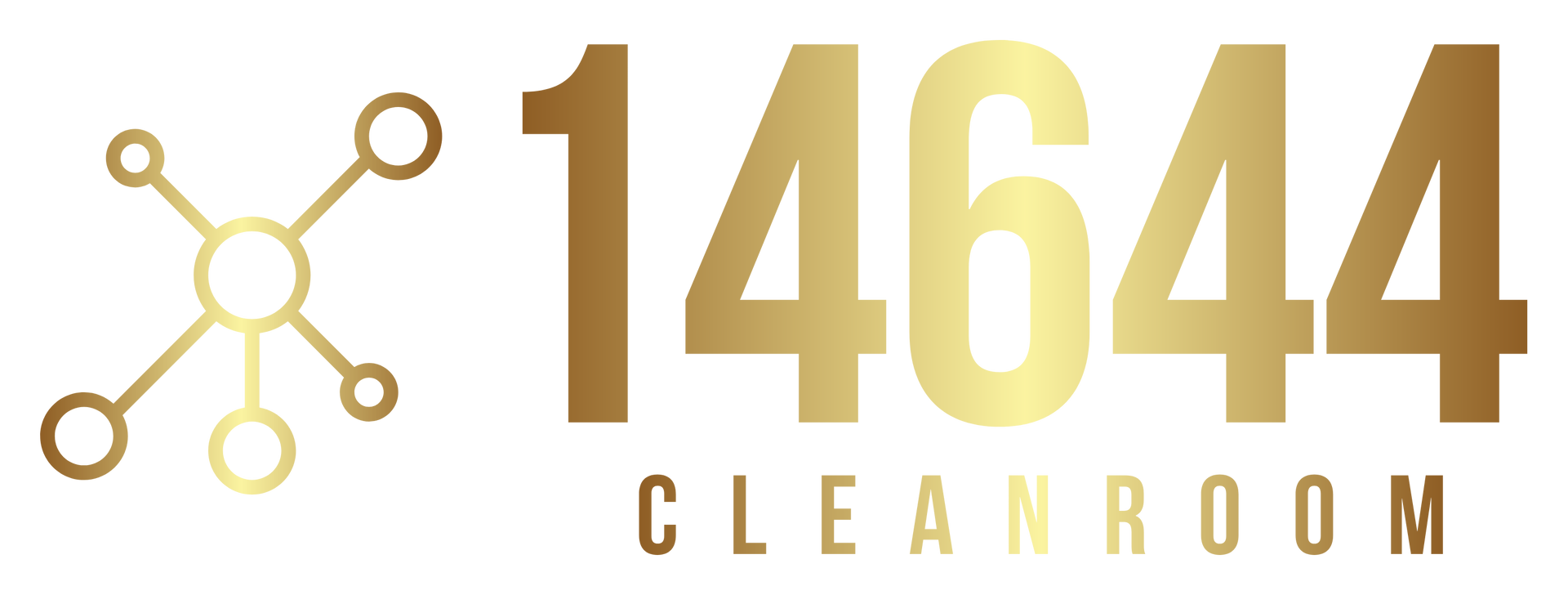Cleanroom Classifications: Let me explain it
Ensuring Consistent Air Cleanliness and Controlled Environments
Cleanrooms are classified based on their air cleanliness levels, which are measured by the concentration and size of airborne particles present in the air.
This classification system helps ensure that cleanroom environments meet the necessary standards for industries where contamination control is crucial.
The ISO 14644 series of standards provides an internationally recognized classification system for cleanrooms, ensuring consistent air cleanliness levels across various industries.
These standards are widely adopted and serve as a global benchmark for cleanroom environments.
ISO 14644 Cleanroom Standards
The ISO 14644 series includes multiple parts that define the classification and maintenance requirements for cleanrooms. Below are the key standards:
1. ISO 14644-1:2015 – Classification of Air Cleanliness
This standard specifies the classification of cleanrooms based on the maximum allowable particle concentration per cubic meter of air. The classification ranges from ISO Class 1 (the cleanest) to ISO Class 9 (less clean). The standard helps establish the appropriate cleanliness level required for specific applications or processes.
2. ISO 14644-2:2015 – Monitoring and Compliance Requirements
ISO 14644-2 outlines the requirements for monitoring cleanroom environments to ensure compliance with the specified cleanliness class. It details the monitoring frequencies, methods, and parameters that need to be tracked to maintain the required air cleanliness levels.
3. ISO 14644-3:2019 – Testing Methods for Cleanroom Performance
This part of the standard provides the testing methods used to evaluate a cleanroom's performance. It includes detailed procedures for conducting various tests, such as airborne particle counting, airflow velocity measurements, and pressure differential assessments, to confirm that the cleanroom is operating as designed.
4. ISO 14644-4:2022 – Design, Construction, and Start-Up Considerations
ISO 14644-4 focuses on the design, construction, and commissioning of cleanrooms. It covers the critical elements that should be considered during cleanroom setup, such as proper HVAC systems, filtration, and materials that minimize the risk of contamination during the build phase and initial operation.
These ISO 14644 standards ensure that cleanrooms maintain consistent air cleanliness levels, providing a controlled environment that is crucial for sensitive production processes, particularly in industries such as pharmaceuticals, electronics, and healthcare.
Additional Cleanroom Standards and Regulations
In addition to the ISO 14644 series, cleanroom requirements may vary depending on the industry and specific applications. Several other standards and regulations provide more detailed guidelines based on the type of work performed in the cleanroom:
1. Pharmacies with Sterile Compounding
Pharmacies that engage in sterile compounding must adhere to specific guidelines to ensure the sterility of medications. These guidelines are outlined in:
USP <797> – Standards for the compounding of sterile preparations.
USP <800> – Guidelines for handling hazardous drugs in a healthcare setting.
USP <825> – Focuses on the standards for radiopharmaceuticals used in medical procedures.
These standards ensure that compounding pharmacies maintain the necessary cleanliness and safety for patient care.
2. Pharmaceutical Manufacturing
In pharmaceutical manufacturing, EU GMP (Good Manufacturing Practices) guidelines are typically followed. These guidelines classify cleanrooms into Grades A, B, C, and D based on their required level of cleanliness. This ensures that sterile drug production processes meet strict cleanliness and environmental conditions to prevent contamination during manufacturing.
3. Other Regulations
Various other regulatory bodies impose additional cleanroom requirements based on regional or national standards. Some of these include:
FDA (U.S. Food and Drug Administration): Regulates cleanliness standards for the pharmaceutical and medical device industries.
EMEA (European Medicines Agency): Provides guidelines for manufacturing facilities in Europe.
Local or National Standards: Countries may have specific cleanroom regulations depending on the industry (e.g., ISO 13485 for medical device manufacturing, or GMP regulations for food production).
These additional regulations and standards are designed to ensure that cleanrooms are compliant with the highest industry-specific standards and produce safe, reliable, and uncontaminated products.
How I Can Help You Navigate Cleanroom Classifications
Understanding the right cleanroom classification and ensuring compliance with the necessary standards is crucial for maintaining product quality and meeting regulatory requirements.
If you’re uncertain about which cleanroom classification applies to your industry or need help with the cleanroom setup, I’m here to guide you through the process.
I can assist you in:
- Selecting the correct cleanroom classification based on your industry and product requirements.
- Interpreting ISO 14644 standards and understanding how they apply to your cleanroom.
- Navigating additional regulations specific to your industry, such as pharmaceutical manufacturing or healthcare guidelines.
- Ensuring ongoing compliance through monitoring and testing.
Feel free to reach out for guidance on how cleanroom classifications apply to your business and to help you ensure compliance with confidence.
Let’s Start the Conversation
Cleanroom classification is an essential part of maintaining a controlled environment for sensitive processes and products.
Whether you’re designing a new cleanroom, upgrading your existing facility, or ensuring compliance with industry standards, I am here to help.
Contact me today to learn more about cleanroom classifications and how they apply to your industry!
Read more in relevant Blogposts
The Evolution of Cleanroom Standards Globally
Understanding Cleanroom Standards and Certification: A Comprehensive Guide
ISO 13485: Comprehensive Overview of the Medical Device Quality Management Standard
Standards and Certifications for Cleanrooms: Ensuring Controlled Environments for Sensitive Processes
Understanding Cleanroom Classifications and Standards



